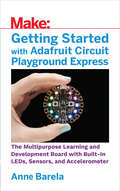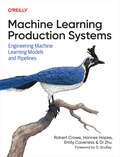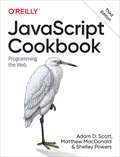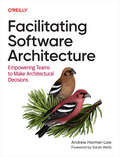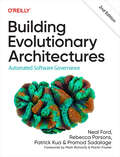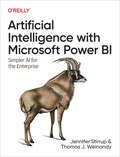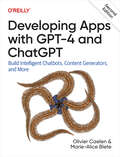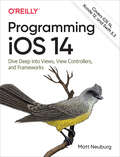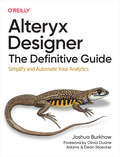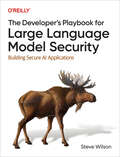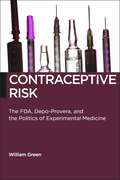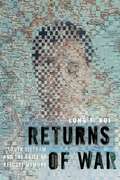- Table View
- List View
Gaps and Emerging Technologies in the Application of Solid-State Roadway Lighting
by Transportation Research Board National Academies of Sciences, Engineering, and Medicine Katie McLaughlin National Cooperative Highway Research Program Don McLean Tom Timcho Paul Lutkevich Travis Longcore Mansoureh Sadat Jalali Steven Stapleton Andrew Kassing Yingfeng “Eric” Li Rajaram Bhagavathula Ronald GibbonsRoadway lighting must balance user needs and safety with the impact of the lighting system on the environment. For example, the impact of lighting on flora and fauna might be considered more important for a roadway along a wildlife reserve or in a coastal region, whereas user safety might be more critical on interstates and major arterials. NCHRP Web-Only Document 420: Gaps and Emerging Technologies in the Application of Solid-State Roadway Lighting, from TRB’s National Cooperative Highway Research Program, narrows the knowledge gaps related to the further application of Solid-State Roadway Lighting.
Development of a New Highway Drainage Manual
by Scott Brown Transportation Research Board National Academies of Sciences, Engineering, and Medicine National Cooperative Highway Research Program Dan Ghere Casey Kramer James D. SchallThe AASHTO Drainage Manual (ADM) (2014) provides a template and guidelines that facilitate state transportation agencies in the development of a highway drainage design manual. NCHRP Web-Only Document 423: Development of a New Highway Drainage Manual, from TRB's National Cooperative Highway Research Program, is a new, up?to?date highway drainage manual informed by the 2014 ADM and provides state and local transportation agencies with design guidelines, along with the technical background to support them.
Communication to Bridge the Gap Between Food Production and Nutrition and Health: Proceedings of a Workshop
by Food and Nutrition Board National Academies of Sciences, Engineering, and Medicine Health and Medicine DivisionThe National Academies Food and Nutrition Board hosted a public workshop in May 2024 to explore the challenges and successes of bidirectional communication between producers of food and consumers about food sources, production, and composition. Speakers from a broad range of disciplines, including agriculture and nutrition researchers, journalists, social scientists, and more considered the health and nutrition needs of consumers across the food system. This proceedings summarizes the presentations and discussions that occurred at the workshop.
Carbon Removal at Airports
by Transportation Research Board National Academies of Sciences, Engineering, and Medicine Zhe Huang Airport Cooperative Research Program Sara Kaplan Krista Robertson Kate Andrus Amy Swan Jane Zelikova Keith Paustian Scott Cary Julia M. Nagy Katherine B. Preston Carly Shannon Candace Gosney Ben Pecheux Jen Wolchansky Lauren Rasmussen Celeste VandeventerAirports are committing to achieve net-zero carbon emissions, some by as soon as 2050. Part of that commitment can include carbon dioxide removal (CDR), a segment of the industry that is rapidly changing; new technology, science, and best practices are constantly being discovered and published. With CDR pathways, there are many details, opportunities, constraints, and application guidelines for airports to consider. ACRP Research Report 270: Carbon Removal at Airports, from TRB’s Airport Cooperative Research Board, aims to define the terms related to CDR and potential applications and discusses the need for carbon reduction, the different pathways for removing carbon, a process for evaluating CDR, and airport-specific considerations.
Quantitative Safety Analyses for Highway Applications
by John Campbell Transportation Research Board National Academies of Sciences, Engineering, and Medicine Daniel Cook National Cooperative Highway Research Program Jennifer Ogle Brelend Gowan Douglas W. Harwood Elizabeth Wemple Ingrid Potts Karen Dixon Darren TorbicDevelopment of the AASHTO Highway Safety Manual began from a TRB conference session and a workshop, both held in 1999, that identified the need for a traffic safety document analogous to the role of the Highway Capacity Manual for traffic operations. NCHRP Research Report 1140: Quantitative Safety Analyses for Highway Applications, from TRB’s National Cooperative Highway Research Program, describes a multiyear research process undertaken to improve the state of the practice for quantitative safety analyses for highway applications.
Nantucket Shoals Wind Farm Field Monitoring Program
by Ocean Studies Board Division on Earth and Life Studies National Academies of Sciences, Engineering, and Medicine Committee on Evaluation of Hydrodynamic Modeling and Implications for Offshore Wind Development: Nantucket ShoalsA 2024 consensus report of the National Academies of Sciences, Engineering, and Medicine titled Potential Hydrodynamic Impacts of Offshore Wind Energy on Nantucket Shoals Regional Ecology: An Evaluation from Wind to Whales, examined the potential for offshore wind farms in the Nantucket Shoals region to affect oceanic physical processes and in turn impact ecosystem dynamics, including zooplankton productivity and aggregations relevant to right whale foraging and population health. Among other recommendations, the report outlined the need for observational and modeling efforts to fill knowledge gaps and inform decision-making regarding wind energy development and operations in the region. To delve further into specifically what observational and monitoring activities could best meet these needs, the National Academies hosted a follow-on workshop, entitled Field Monitoring Program to Evaluate Hydrodynamic Impacts of Offshore Wind Energy on Nantucket Shoals Regional Ecology: A Workshop, July 9-10, 2024 in Washington, DC. The workshop brought together participants from academia, government, and the offshore wind industry to explore examples of observational needs and discuss components of a field monitoring program that could help to advance models for elucidating the potential effects of wind energy development on Nantucket Shoals ecology. This Proceedings of a Workshop was prepared by rapporteurs as a high-level summary of what occurred at the workshop.
Increasing the Utility of Wastewater-based Disease Surveillance for Public Health Action: A Phase 2 Report
by Water Science and Technology Board Board on Population Health and Public Health Practice Division on Earth and Life Studies National Academies of Sciences, Engineering, and Medicine Health and Medicine Division Committee on Community Wastewater-based Infectious Disease SurveillanceThe COVID-19 pandemic sparked widespread implementation of wastewater surveillance in communities across the United States to help track the spread of the disease. In contrast to clinical laboratory testing that tracks individual cases of infection, wastewater surveillance provides a way to measure the amount of DNA from pathogens coming from homes, businesses, and other institutions that share a sewer system. To help coordinate and centralize early efforts, the U.S. Centers for Disease Control and Prevention (CDC) launched the National Wastewater Surveillance System (NWSS) in September 2020, with pilot sites in eight states. As of April 2024, the NWSS is receiving data from more than 1,300 active sampling sites, covering a population of 130 million individuals. A Phase 1 report released in early 2023 examined the usefulness of the NWSS during the COVID-19 pandemic, described the potential value of a robust national wastewater surveillance system beyond COVID-19, and provided recommendations to increase the public health impact of such a system. This Phase 2 report details the technical constraints and opportunities to improve wastewater surveillance for the prevention and control of infectious diseases in the U.S. It recommends improvements in the consistency and quality of national wastewater sampling, testing, and data analysis, and identifies research and technology development needs for a national wastewater surveillance system that can serve ongoing and changing public health needs in the United States.
Launching Lifelong Health by Improving Health Care for Children, Youth, and Families
by Board on Health Care Services Board on Children, Youth, and Families Division of Behavioral and Social Sciences and Education National Academies of Sciences, Engineering, and Medicine Health and Medicine Division Committee on Improving the Health and Wellbeing of Children and Youth through Health Care System TransformationEnsuring every child is on an optimal trajectory to a healthy and productive adulthood is imperative for the nation’s future. Investments in children and families improves child health, but also health equity, education outcomes, workforce productivity, and cost-effectiveness in public spending. Despite advances in health care, children, especially those from historically marginalized groups, face rising rates of chronic diseases, obesity, and mental health challenges. Launching Lifelong Health by Improving Health Care for Children, Youth, And Families presents a vision for transforming the child and adolescent health care system. This report also examines how the health care system can be better positioned to equitably address the needs of all children and families and leverage community supports. This requires transforming key components, such as health care financing, public health investment, community partnerships, and accountability strategies, to encourage team-based care delivery models and attention to and health promotion, prevention, and root causes of health disparities.
Strategic Report on Research and Development in Biotechnology for Defense Innovation
by Division on Earth and Life Studies Board on Life Sciences National Academies of Sciences, Engineering, and Medicine Committee on Biotechnology Capabilities for National Security Needs—Leveraging Advances in Transdisciplinary BiotechnologyAt the request of the National Security Commission on Emerging Biotechnology, Strategic Report on Research and Development in Biotechnology for Defense Innovation provides an overview of the current landscape of artificial intelligence and machine learning (AI/ML)-enabled biotechnology, the opportunities it presents, and the challenges it poses. This report offers a strategic vision for connecting scientists and technologists to build on, leverage, and tailor advances at the intersection of AI/ML, automated experimentation, and biotechnology to drive innovation in defense-related biotechnologies. Strategic Report on Research and Development in Biotechnology for Defense Innovation makes recommendations to address long-standing challenges that have limited research, development, prototyping, testing and evaluation, and eventual use of biotechnologies. Addressing these challenges will help to advance U.S. national security and defense by improving the performance of existing capabilities, enabling the creation of domestic supply chains of valuable products, reducing reliance on processes and chemicals that are harmful to the environment, and/or adding new capabilities not currently possible with established technologies.
Carbon Utilization Infrastructure, Markets, and Research and Development: A Final Report
by Division on Engineering and Physical Sciences Division on Earth and Life Studies Board on Chemical Sciences and Technology Board on Energy and Environmental Systems National Academies of Sciences, Engineering, and Medicine Committee on Carbon Utilization Infrastructure, Markets, Research and DevelopmentNational and international plans for halting and reversing climate change focus on reducing and eventually ending the largest source of greenhouse gas emissions: carbon dioxide (CO2) released by fossil fuel combustion. However, as the nation moves towards replacing many fossil CO2-emitting processes with zero- or low-carbon-emission alternatives, special attention is needed to eliminate net carbon emissions from the systems that cannot be fully “decarbonized”, such as the production of aviation fuel, chemicals, plastics, and construction materials. For these systems, carbon will need to be managed and utilized effectively, in a way that either prevents CO2 from entering the atmosphere or reuses it through circular processes that do not contribute additional emissions. Carbon Utilization Infrastructure, Markets, and Research and Development: A Final Report is the second report of a two-part study. The study’s first report assessed the state of infrastructure for CO2 transportation, use, and storage, highlighting priority opportunities for further investment. This second report identifies potential markets and commercialization opportunities for CO2- and coal waste-derived products, examines economic, environmental, and climate impacts of CO2 utilization infrastructure, and puts forward a comprehensive research agenda for carbon utilization technologies.
Getting Started with Adafruit Circuit Playground Express: The Multipurpose Learning and Development Board with Built-In LEDs, Sensors, and Accelerometer
by Anne BarelaFrom Adafruit Industries, a leader in products to Makers, designers, students young and old, comes the Circuit Playground Express. Connect it to your PC, Mac or Linux computer, and you can be programming interactive projects in minutes. You have a choice of programming environments to choose from: Python, the Microsoft MakeCode graphical building block environment, C/C++ via the Arduino development environment and JavaScript. Whether you are learning interactive programming, have an Internet of Things project in mind, or are looking to design on-the-go wearable electronics, the versatile Circuit Playground Express is the device to start with. In Getting Started with the Adafruit Circuit Playground Express, you'll learn how to:Get up and running quickly with programmable boardsUnderstand the basics of coding in multiple programming languagesUse the built-in sensors for a variety of projectsMake colorful interactive displaysDesign programs for the Internet of Things (IoT)
Machine Learning Production Systems: Engineering Machine Learning Models and Pipelines
by Hannes Hapke Robert Crowe Emily Caveness Di ZhuUsing machine learning for products, services, and critical business processes is quite different from using ML in an academic or research setting—especially for recent ML graduates and those moving from research to a commercial environment. Whether you currently work to create products and services that use ML, or would like to in the future, this practical book gives you a broad view of the entire field.Authors Robert Crowe, Hannes Hapke, Emily Caveness, and Di Zhu help you identify topics that you can dive into deeper, along with reference materials and tutorials that teach you the details. You'll learn the state of the art of machine learning engineering, including a wide range of topics such as modeling, deployment, and MLOps. You'll learn the basics and advanced aspects to understand the production ML lifecycle.This book provides four in-depth sections that cover all aspects of machine learning engineering:Data: collecting, labeling, validating, automation, and data preprocessing; data feature engineering and selection; data journey and storageModeling: high performance modeling; model resource management techniques; model analysis and interoperability; neural architecture searchDeployment: model serving patterns and infrastructure for ML models and LLMs; management and delivery; monitoring and loggingProductionalizing: ML pipelines; classifying unstructured texts and images; genAI model pipelines
JavaScript Cookbook: Programming the Web
by Shelley Powers Adam D. Scott Matthew MacDonaldWhy reinvent the wheel every time you run into a problem with JavaScript? This cookbook is chock-full of code recipes for common programming tasks, along with techniques for building apps that work in any browser. You'll get adaptable code samples that you can add to almost any project--and you'll learn more about JavaScript in the process.The recipes in this book take advantage of the latest features in ECMAScript 2020 and beyond and use modern JavaScript coding standards. You'll learn how to:Set up a productive development environment with a code editor, linter, and test serverWork with JavaScript data types, such as strings, arrays, and BigIntsImprove your understanding of JavaScript functions, including arrow functions, closures, and generatorsApply object-oriented programming concepts like classes and inheritanceWork with rich media in JavaScript, including audio, video, and SVGsManipulate HTML markup and CSS stylesUse JavaScript anywhere with Node.jsAccess and manipulate remote data with REST, GraphQL, and FetchGet started with the popular Express application-building frameworkPerform asynchronous operations with Promises, async/await, and web workers
Facilitating Software Architecture: Empowering Teams to Make Architectural Decisions
by Andrew Harmel-LawThe software architect role is evolving. As systems and their interactions with the teams that build, run, and evolve them become more complex, it's often impossible for those playing the traditional architect roles to be everywhere they need to be. There's simply too much architecture to be done, and the situation has reached a breaking point. There's a better way. Author Andrew Harmel-Law shows you how architects and development teams can collaborate to create and evolve more efficient architectures for their systems. Techniques in this book will help you learn how to create a mindset that allows everyone to practice architecture and build the best systems they've ever experienced. With this book, you will:Understand the new dynamics that affect modern software deliveryLearn a methodology that brings software architecture and development togetherNurture the fundamental interplay of decisions, advice, architecture, and feedback from running systemsInitiate practices that maximize benefits and mitigate risksCreate an approach tuned to architecture, everyone's skills, and your organization's culture
Building Evolutionary Architectures: Automated Software Governance
by Neal Ford Rebecca Parsons Patrick Kua Pramod SadalageThe software development ecosystem is constantly changing, providing a constant stream of new tools, frameworks, techniques, and paradigms. Over the past few years, incremental developments in core engineering practices for software development have created the foundations for rethinking how architecture changes over time, along with ways to protect important architectural characteristics as it evolves. This practical guide ties those parts together with a new way to think about architecture and time.
Artificial Intelligence with Microsoft Power BI: Simpler AI for the Enterprise
by Jen Stirrup Thomas J. WeinandyAdvance your Power BI skills by adding AI to your repertoire at a practice level. With this practical book, business-oriented software engineers and developers will learn the terminologies, practices, and strategy necessary to successfully incorporate AI into your business intelligence estate. Jen Stirrup, CEO of AI and BI leadership consultancy Data Relish, and Thomas Weinandy, research economist at Upside, show you how to use data already available to your organization.Springboarding from the skills that you already possess, this book adds AI to your organization's technical capability and expertise with Microsoft Power BI. By using your conceptual knowledge of BI, you'll learn how to choose the right model for your AI work and identify its value and validity.Use Power BI to build a good data model for AIDemystify the AI terminology that you need to knowIdentify AI project roles, responsibilities, and teams for AIUse AI models, including supervised machine learning techniquesDevelop and train models in Azure ML for consumption in Power BIImprove your business AI maturity level with Power BIUse the AI feedback loop to help you get started with the next project
Developing Apps with GPT-4 and ChatGPT: Build Intelligent Chatbots, Content Generators, and More
by Olivier Caelen Marie-Alice BleteThis book provides an ideal guide for Python developers who want to learn how to build applications with large language models. Authors Olivier Caelen and Marie-Alice Blete cover the main features and benefits of GPT-4 and GPT-3.5 models and explain how they work. You'll also get a step-by-step guide for developing applications using the OpenAI Python library, including text generation, Q&A, and smart assistants.Written in clear and concise language, Developing Apps with GPT-4 and ChatGPT includes easy-to-follow examples to help you understand and apply the concepts to your projects. Python code examples are available in a GitHub repository, and the book includes a glossary of key terms. Ready to harness the power of large language models in your applications? This book is a must.You'll learn:Fundamentals and benefits of GPT-4 and GPT-3.5 models, including the main features and how they workHow to integrate these models into Python-based applications, leveraging natural language processing capabilities and overcoming specific LLM-related challengesExamples of applications demonstrating the OpenAI API in Python for tasks including text generation, question answering, content summarization, classification, and moreAdvanced LLM topics such as prompt engineering, fine-tuning models for specific tasks, RAG, plug-ins, LangChain, LlamaIndex, GPTs, and assistantsOlivier Caelen is a machine learning researcher at Worldline and teaches machine learning courses at the University of Brussels.Marie-Alice Blete, a software architect and data engineer in Worldline's R&D department, is interested in performance and latency issues associated with AI solutions.
Programming iOS 14: Dive Deep Into Views, View Controllers, And Frameworks
by Matt NeuburgIf youâ??re grounded in the basics of Swift, Xcode, and the Cocoa framework, this book provides a structured explanation of all essential real-world iOS app components. Through deep exploration and copious code examples, youâ??ll learn how to create views, manipulate view controllers, and add features from iOS frameworks.Create, arrange, draw, layer, and animate views that respond to touchUse view controllers to manage multiple screens of interfaceMaster interface classes for scroll views, table views, collection views, text, popovers, split views, web views, and controlsDive into frameworks for sound, video, maps, and sensorsAccess user libraries: music, photos, contacts, and calendarExplore additional topics, including files, networking, and threadsStay up-to-date on iOS 14 innovations, such as:Control action closures and menusTable view cell configuration objectsCollection view lists and outlinesNew split view controller architecturePointer customization on iPadNew photo picker and limited photos authorizationReduced accuracy locationColor picker, new page control behavior, revised date pickers, and more!Want to brush up on the basics? Pick up iOS 14 Programming Fundamentals with Swift to learn about Swift, Xcode, and Cocoa. Together with Programming iOS 14, youâ??ll gain a solid, rigorous, and practical understanding of iOS 14 development.
Alteryx Designer: Simplify and Automate Your Analytics
by Joshua BurkhowAnalytics projects are frequently long, drawn-out affairs, requiring multiple teams and skills to clean, join, and eventually turn data into analysis for timely decision-making. Alteryx Designer changes all of that. With this low-code, self-service, drag-and-drop workflow platform, new and experienced data and business analysts can deliver results in hours instead of weeks.This practical book shows you how to master all areas of Alteryx Designer quickly. Author and Alteryx ACE Joshua Burkhow starts with the basics of building a workflow, then introduces more than 200 tools for working with intermediate and advanced analytics functionality. With Alteryx Designer's all-in-one toolkit, you'll migrate from legacy analytics software or Excel with ease.Ready to work with data quickly and efficiently? This guide gets you started.Learn the fundamentals of cleaning, prepping, and analyzing data with Alteryx DesignerInstall, navigate, and quickly become competent with the Alteryx Designer layout and functionalityConstruct accurate, performant, reliable, and well-documented workflows that automate business processesLearn intermediate techniques using spatial analytics, reporting, and in-database toolsDive into advanced Alteryx capabilities, including predictive and machine learning toolsGet introduced to the entire Alteryx Analytic Process Automation (APA) Platform
The Developer's Playbook for Large Language Model Security: Building Secure AI Applications
by Steve WilsonLarge language models (LLMs) are not just shaping the trajectory of AI, they're also unveiling a new era of security challenges. This practical book takes you straight to the heart of these threats. Author Steve Wilson, chief product officer at Exabeam, focuses exclusively on LLMs, eschewing generalized AI security to delve into the unique characteristics and vulnerabilities inherent in these models.Complete with collective wisdom gained from the creation of the OWASP Top 10 for LLMs list—a feat accomplished by more than 400 industry experts—this guide delivers real-world guidance and practical strategies to help developers and security teams grapple with the realities of LLM applications. Whether you're architecting a new application or adding AI features to an existing one, this book is your go-to resource for mastering the security landscape of the next frontier in AI.You'll learn:Why LLMs present unique security challengesHow to navigate the many risk conditions associated with using LLM technologyThe threat landscape pertaining to LLMs and the critical trust boundaries that must be maintainedHow to identify the top risks and vulnerabilities associated with LLMsMethods for deploying defenses to protect against attacks on top vulnerabilitiesWays to actively manage critical trust boundaries on your systems to ensure secure execution and risk minimization
Transforming Criminal Justice: An Evidence-Based Agenda for Reform
by Jon B. Gould Pamela R. MetzgerAn evidence-based roadmap for how the American criminal justice system can be reformedThis important volume brings together today's leading criminal justice scholars and practitioners to offer a roadmap for those who want to change the face of the American criminal justice system. This collection of essays addresses thirteen significant issues in justice reform, starting from a suspect’s first interaction with the police and continuing to gun violence, prosecutorial innovation, sentencing reform, eliminating bail, recidivism and re-entry, collateral consequences of crime, and eliminating false convictions. A common theme emerges in this volume: the American criminal justice system is riddled with weaknesses that cause harm and require greater accountability. Each chapter is both educational and prescriptive, helping readers to understand the problems that plague the criminal justice system, how those problems can be addressed, and who should take responsibility for them. Part scholarly research, part account of the justice system’s workings and failings, and part agenda for action, Transforming Criminal Justice aims to educate and move readers to effect change.
Just Like Family: How Companion Animals Joined the Household (Animals in Context)
by Andrea Laurent-SimpsonWinner, 2023 Animals and Society's Distinguished Book Award, presented by the American Sociological AssociationThe rise and increasingly important role of companion animals in our familiesFrom homemade meals for our dogs to high-end feline veterinary care, pets are a growing multi-billion-dollar industry in the United States. In Just Like Family, Andrea Laurent-Simpson explores the expanding role of animals in what she calls “the multi-species family,” providing a window into a world where almost 95 percent of adults who share their homes with dogs and cats identify—and ultimately treat—their animal companions as legitimate members of their families. With an insightful eye, Laurent-Simpson examines why and how these animals have increasingly become an important part of our households. She highlights their various roles in our lives, including as siblings to our existing children, as animal children themselves, and in some cases, even as grandchildren, particularly as fertility rates decline and a growing number of younger couples choose to live a childfree lifestyle. Ultimately, Laurent-Simpson highlights how animals—and their place in our lives—have changed the structure of the American family in surprising ways. Just Like Family provides a fascinating inside look at our complex relationships with our beloved animal companions in the twenty-first century.
Contraceptive Risk: The FDA, Depo-Provera, and the Politics of Experimental Medicine (Biopolitics #12)
by William GreenThe story of Depo-Provera joins the national struggle over the drug's FDA approval to the state legal issues raised by its contraceptive and criminal justice uses.Depo-Provera is known as an injectable hormonal birth control method, but few are familiar with its dark and complicated history. Depo-Provera was tested on women since the mid-1960s without their informed consent until it was FDA-approved in 1992, but never FDA-approved as chemical castration for male sex offenders.Contraceptive Risk is William Green's landmark study of Depo-Provera. Based on a fascinating combination of archival materials and interviews, the book is framed as three interconnected stories told by Judith Weisz, who chaired the FDA's Public Board of Inquiry on Depo-Provera, a scientific court; by Anne MacMurdo who brought a products liability suit against Upjohn, the drug's manufacturer, for the deleterious side effects she suffered from the drug's use; and by Roger Gauntlett, an Upjohn heir who, when he was convicted of sexual assault, refused to take a dose of his family's own medicine as a probation condition. Together these three stories of Depo-Provera's convoluted fifty year odyssey call for a paradigm shift in pharmaceutical drug development.Contraceptive Risk is a thoroughly researched and engrossing approach to the scientific, political and institutional forces involved in health law and policy, as well as the multifaceted politics of measuring risk.
Returns of War: South Vietnam and the Price of Refugee Memory (Nation of Nations #32)
by Long T. BuiThe legacy and memory of wartime South Vietnam through the eyes of Vietnamese refugees In 1975, South Vietnam fell to communism, marking a stunning conclusion to the Vietnam War. Although this former ally of the United States has vanished from the world map, Long T. Bui maintains that its memory endures for refugees with a strong attachment to this ghost country. Blending ethnography with oral history, archival research, and cultural analysis, Returns of War considers how the historical legacy of a nation that only existed for twenty years is being kept alive by its dispersed stateless exiles.Returns of War argues that Vietnamization--as Richard Nixon termed it in 1969--and the end of South Vietnam signals more than an example of flawed American military strategy, but a larger allegory of power, providing cover for U.S. imperial losses while denoting the inability of the (South) Vietnamese and other colonized nations to become independent, modern liberal subjects. Bui argues that the collapse of South Vietnam under Vietnamization complicates the already difficult memory of the Vietnam War, pushing for a critical understanding of South Vietnamese agency beyond their status as the war’s ultimate “losers.” Examining the lasting impact of Cold War military policy and culture upon the “Vietnamized” afterlife of war, this book weaves questions of national identity, sovereignty, and self-determination to consider the generative possibilities of theorizing South Vietnam as an incomplete, ongoing search for political and personal freedom.
The Secular Paradox: On the Religiosity of the Not Religious (Secular Studies #5)
by Joseph BlankholmChoice Outstanding Academic Title 2023A radically new way of understanding secularism which explains why being secular can seem so strangely religiousFor much of America’s rapidly growing secular population, religion is an inescapable source of skepticism and discomfort. It shows up in politics and in holidays, but also in common events like weddings and funerals. In The Secular Paradox, Joseph Blankholm argues that, despite their desire to avoid religion, nonbelievers often seem religious because Christianity influences the culture around them so deeply. Relying on several years of ethnographic research among secular activists and organized nonbelievers in the United States, the volume explores how very secular people are ambivalent toward belief, community, ritual, conversion, and tradition. As they try to embrace what they share, secular people encounter, again and again, that they are becoming too religious. And as they reject religion, they feel they have lost too much. Trying to strike the right balance, secular people alternate between the two sides of their ambiguous condition: absolutely not religious and part of a religion-like secular tradition.Blankholm relies heavily on the voices of women and people of color to understand what it means to live with the secular paradox. The struggles of secular misfits—the people who mis-fit normative secularism in the United States—show that becoming secular means rejecting parts of life that resemble Christianity and embracing a European tradition that emphasizes reason and avoids emotion. Women, people of color, and secular people who have left non-Christian religions work against the limits and contradictions of secularism to create new ways of being secular that are transforming the American religious landscape. They are pioneering the most interesting and important forms of secular “religiosity” in America today.

